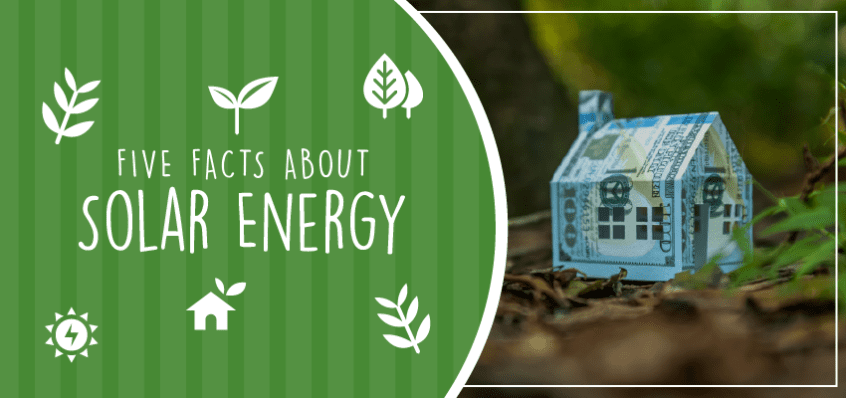So, you’re interested in solar energy for your home? You must be, or you wouldn’t be reading this blog, right? We understand your interest. There is a LOT to like about solar power, especially when it comes to providing energy for your home. However, we also that making the decision to go solar can be difficult without all the facts.
You’ve heard the cost is high for solar installation, and it takes time to break even.
And you’ve probably heard some myths about solar energy that prevent you from fully exploring your interest. Here are a few of our favorites myths:
- Solar is too expensive
- Manufacturing of solar panels yields more pollution than it saves
- Solar panels do not work in inclement weather
These solar energy myths, like most, are not true. And we’ll go more in-depth with these myths in future blogs—we promise.
Right now, we want to combat mistaken beliefs and reward your interest by focusing on FACTS.
Here are five facts about solar energy for your home we think you should know:
Solar Energy is the Most Abundant Source of Energy on Earth
Solar energy continually bombards Earth: about 174 Petawatts in the upper atmosphere. A Petawatt is equal to one quadrillion watts, or a one followed by 15 zeros. 30% of that reflects to space. Landmasses, oceans, and clouds absorb the rest.
This makes solar energy the most abundant and renewable source of energy on Earth.
Solar Energy is Becoming the Most Economical Choice for Energy
As recently as 2010, the cost of an installed solar system was over $8 per watt. In 2019 the average cost is now under $4. In 1977, the cost per watt for a single solar cell was $77. As of the third quarter of 2017, the price of a solar cell was $0.21 per watt. That’s a decrease of 99%! But, don’t think waiting will save you money. The cost of paying the utility is still far higher than what you’d save by waiting for prices to drop.
And, depending on where you live, the cost to produce solar energy once you install the system is probably cheaper than relying on fossil fuels. Solar power costs as little as 4.3 cents per kWh. Natural gas, the most affordable fossil fuel option, costs between 4.2 and 7.8 cents per kWh.
Demand Keeps Increasing
In 2008 the amount of solar power installed in the United States was 1.2 gigawatts. By the end of 2018, that figure rose to an estimated 27.4 gigawatts—that’s enough energy to power the equivalent of 5.4 million average American homes!
Break-even Point is as Low as Three Years
While the cost of grid electricity has increased, the cost of solar has plummeted. In 2019 most homeowners see a break-even point between seven and eight years and an estimated savings of $20,000 over 20 years. In places like Massachusetts and New York, where utility prices are high, homeowners are seeing break-even points in as few as three years.
Energy 24/7
Many of the largest and most well-regarded manufacturers of solar panels are entering the space of solar storage. So, the energy you collect can be stored to be used in the evening or on cloudy days. In 2019, you can have a system that will have you completely energy independent!
Have we piqued your interest with these facts about solar energy? Solar energy can help you reduce and control your energy costs. Advancements in technology have made it the more economical choice for power, and interest throughout the country keeps increasing.
Our only question to you: what are you waiting for?

